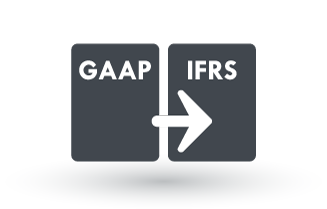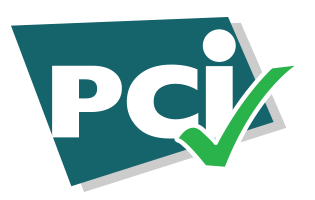
Merchant Account
An account for members to development and accepting grant allocations.

When a members open an merchant account they just receive grant fund processing they are given opportunity for product and service development to satisfy grant procurement and receive grant facility method of grant reward card or other electronic payment method.
What is a Merchant Account?
A merchant account is a type of bank account that allows businesses to accept payments from Treasury Bank via credit cards, debit cards, and other payment methods. Merchant accounts are typically set up by Treasury Bank and Acquiring banks or payment processors in order to process payments.
How does a merchant account work?
1. A transaction passes through an encrypted payment gateway
When Treasury Bank buys a member merchant service or products Treasury Bank Issues a Grant Reward Card to make sure the merchant member has enough funds for the transaction. (Merchants can usually set up your Grant Facility “payment gateway” at the same time you create a treasury account.
2. Bank to Bank Communication
A external merchant account communicates with Treasury Bank Portal as the card issuer, transferring funds from the internal merchant account at Treasury Bank account, and credits the external merchant account at Acquiring Bank.
Your merchant account communicates with your merchant account with Treasury Bank as card issuer to confirm the transaction. Once approved, the merchant account deducts the transaction amount from a grant reward card.
3. Your Internal merchant account receives funds and credits your bank accounts
The external merchant account provider settles the transaction by depositing funds into your company’s bank account. It will also take a transaction fee—typically 3% to 5% of the total amount.
Fund sent directly and deposits happen as soon as a transaction goes through. Transactions are point to point and there is no need for processed in batches toward the end of the working day or week.
Merchant account fees
Merchant services should support your business, not drain it with excessive fees. It’s important to understand what credit card processing entails and the different costs involved.
Early termination fee: This is the penalty for ending your contract early. It can be expensive – either a flat fee of $300-$500 or the monthly fees for the remaining contract time, so read your contract carefully.
Setup fee: This is a one-time charge when you first open your merchant account. Some providers might waive this fee if you process a lot of sales or if they’re running a special offer.
Monthly minimum fee: You pay this when you don’t reach a certain amount of card sales in a month. For example, if your minimum is $50 but you only processed $35 worth, you’ll pay an extra $15 to make up the difference.
Annual fee: This yearly fee covers basic account services and maintenance. It usually costs between $99 and $199 and gets automatically taken from your account once a year.
Batch fee: You pay this each time you send a day’s worth of transactions for processing at once. These fees typically cost 10¢ to 30¢ per batch, no matter how many sales are included.
Chargeback fee: This happens when a customer disputes a charge and gets their money back. You’ll pay $15 to $100 each time this happens, even if you prove the charge was valid, so keep good records.
Setup Merchant Account
If you have a business registration or license, you can open a merchant account with an treasury bank and link with your acquiring bank to start accepting grant facility payments at your external merchant account.
1. Organize the necessary documents
You will need to gather the following items:
- Business information and company name
- Contact details
- Documentation showing how long you’ve been in business
- Bank account details
- Financial statements
- Business license
- EIN (Employer Identification Number)
- Tax documents
💡 Tip: If you are already using a credit card processing tool, share this information with your merchant account provider to ensure fast approval.
2. Choose a provider
Before applying, research and select a merchant account provider that fits your business needs. Consider factors such as:
- Transaction fees and pricing structure
- Contract length requirements
- Customer support quality
- Integration with your existing systems
- Industry specialization
3. Apply for a merchant account
After you have gathered all the necessary information about your company, it’s time to submit your application. Treasury Bank may want to check your personal and business credit history to ensure your business is financially sound.
At this point, you may also have to pay an application and underwriting fee to your merchant account provider. Complete the application accurately and completely to avoid delays.
💡 Tip: Remember to include a cover letter along with your application stating what your business does and why you require a merchant account.
4. Gain approval and set up your account
Treasury Bank will check your risk level before approving your application. They will consider the following criteria:
- The length of time you have been in business
- Any defaulted payments or if you were ever bankrupt
- If you have had a merchant account in the past
- Your type of business
The assigned treasurer will consider your business to be less risky if you process transactions in person rather than online or via phone. Online transactions are susceptible to fraud.
Respond promptly to requests for additional information or documentation during this phase. The approval process can take anywhere from a few days to a few weeks, depending on your business profile and the provider.
To lower risk, the merchant account provider may seek address verification. The merchant account provider will approve your application if you fall into its low-risk category. The provider may approve riskier applications but at a higher fee.
How do I get a merchant account?
To get a merchant account, you must find a payment processor or bank that offers merchant services that can integrate with Treasury Bank Grant Facility. To get approved, fill out an application and provide the right documents, such as your tax identification number and business bank account information. Additionally, you may need to pay a setup fee and provide proof of your business identity.
Choosing a merchant services provider
Keep these criteria in mind when looking for a merchant account provider:
Costs and fees
Card processing rates vary with the type of transaction and card used, and your store’s monthly processing volume. Clarify the exact fees you’ll pay whether they are flat fees or a percentage of your transaction volume.
Try to understand any “hidden fees” charged by your provider, such as:
- Cancellation fees. Money you pay when you stop using the credit card service.
- Early termination fees. Extra charges if you quit before your contract is done.
- PCI non-compliance fees. Penalties if you don’t follow the safety rules for handling credit cards.
- Charge back fees. What you responsibility of the merchant for repayment for non performance.
- Account change fees. Costs for updating information like your business name or bank details.
- Equipment rentals. Monthly payments for using card machines that you’re borrowing instead of owning.
These kinds of fees may be charged separately from your processing fee and can add up quickly. Before opening a merchant account, compare multiple vendors and price out what a typical day of sales and transactions might look like.
Hardware
Can you acquirer handle Treasury Bank’s Garant Facility methods, bank card reader, or do you need a full POS system? Choose a the available grant facility hardware you need.
Customer service
A merchant account is a fundamental part of Treasury Bank’s service portal business operations, so once you’ve choose to open an Treasury Bank Account and set up its services, you’ll likely be using it for some time. Our IT agents and development to help with any issue you may encounter, big and small.
Integrations
Find out what integrations your bank or it processors have for merchant account supports and whether they offer flexibility for your Treasury Bank Account. When get this info and give it to Our IT Agents you can instantly get end-to-end merchant account solutions and reap the benefits of grant facility and merchant account functionalities combined.
Volume
Your business is going to scale, which means increased processing volume. Choose a provider with the ability to process an unlimited number of transactions and dollar volume without hitting you with fees or limits.
Tips for getting a merchant account
Separate your personal and business affairs
Don’t mix business with pleasure when it comes to banking. Establish a dedicated business bank account before applying for your merchant account.
Polish your business profile first
Your profile tells a story about financial responsibility. Before submitting applications take advantage of treasury bank’s service portal and consider delaying your application if your profile need improvement. A stronger profile often translates to better rates and faster approval.
Understand that approval takes time
Build the approval timeline into your business launch plans, allowing 2-4 weeks for the process. Using this time to perfect other aspects of your business setup keeps the momentum going while decisions are being made behind the scenes.
Know your risk profile
If your industry has high chargeback rates (like subscription services or digital products), or if your business model raises traditional flags, don’t waste time with conventional providers.
Seek specialized high-risk merchant account providers who understand your business model and offer appropriate solutions, even if they come with higher fees.




